NPIP# 14-1383 : C&C Homestead, Lakeville, MA
About the Pitastar
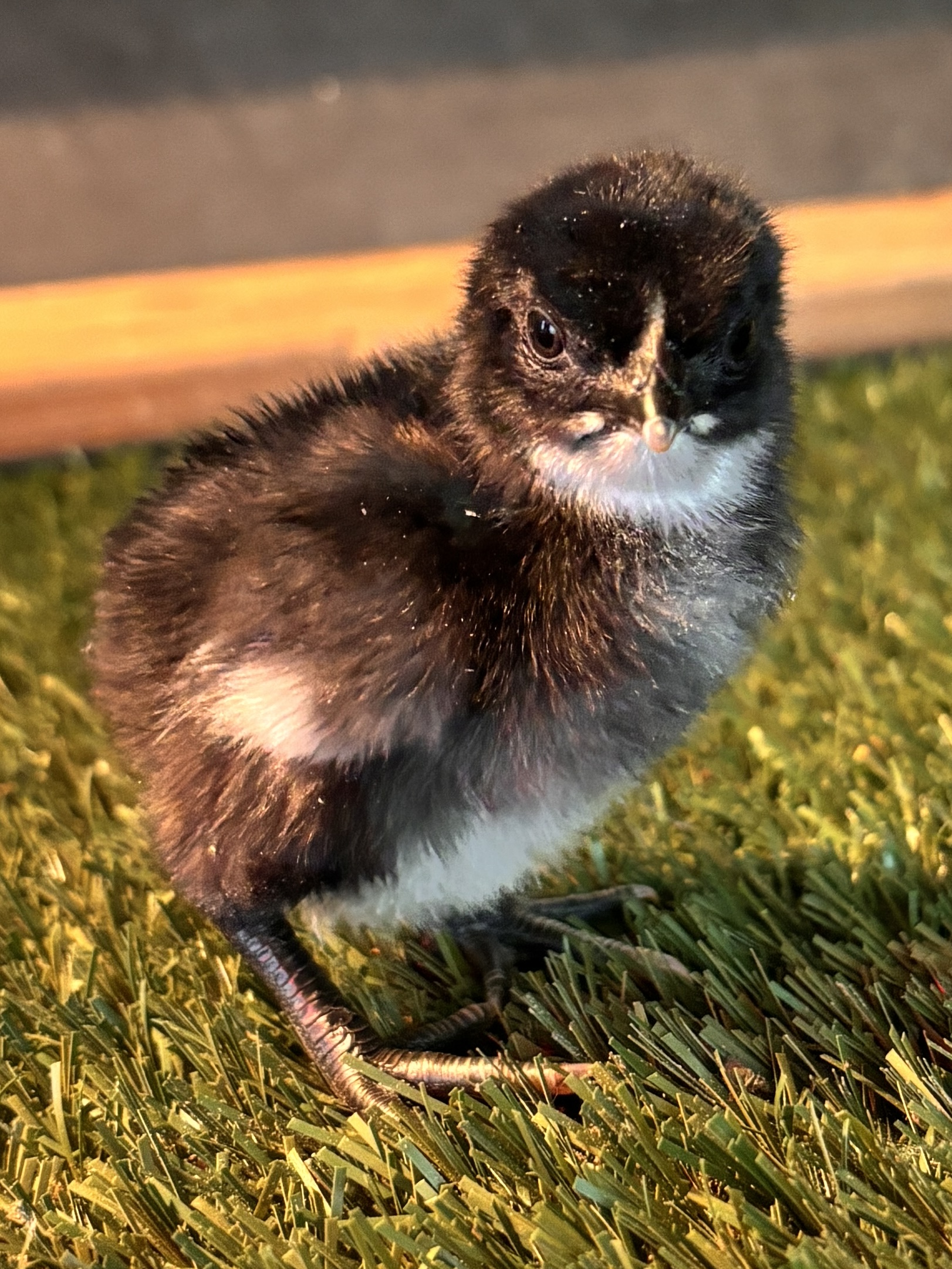
The Pitastar is a unique that combines the striking beauty of the Pita Pinta Asturiana and the Black Copper Maran resulting in a bird that is not only stunning in appearance but also highly functional for backyard chicken enthusiasts. Here’s what you can expect from this exciting cross:
Parent Breeds:
Pita Pinta Asturiana (Pita Pinta)
The Pita Pinta is a rare heritage breed from Asturias, Spain, known for its striking black-and-white plumage and hardy nature.
Plumage: Typically black with white mottling, though some variations exist.
Eggs: Light cream-colored.
Temperament: Calm and hardy, ideal for various climates.
Build : A sturdy, medium-sized dual-purpose bird.
Black Copper Maran
Black Copper Marans are a sought-after breed, celebrated for their stunning plumage and the rich, chocolate-brown eggs they produce.
Plumage: Striking black feathers with rich copper accents, especially on the neck and saddle of roosters.
Eggs: Renowned for their dark chocolate-brown eggs, among the darkest of any chicken breed.
Features: Single comb, clean legs (in some strains), or feathered shanks (in traditional French lines).
Temperament: Calm and gentle, making them suitable for both beginners and experienced keepers.
The Pitacana:
A Unique and Stunning Hybrid
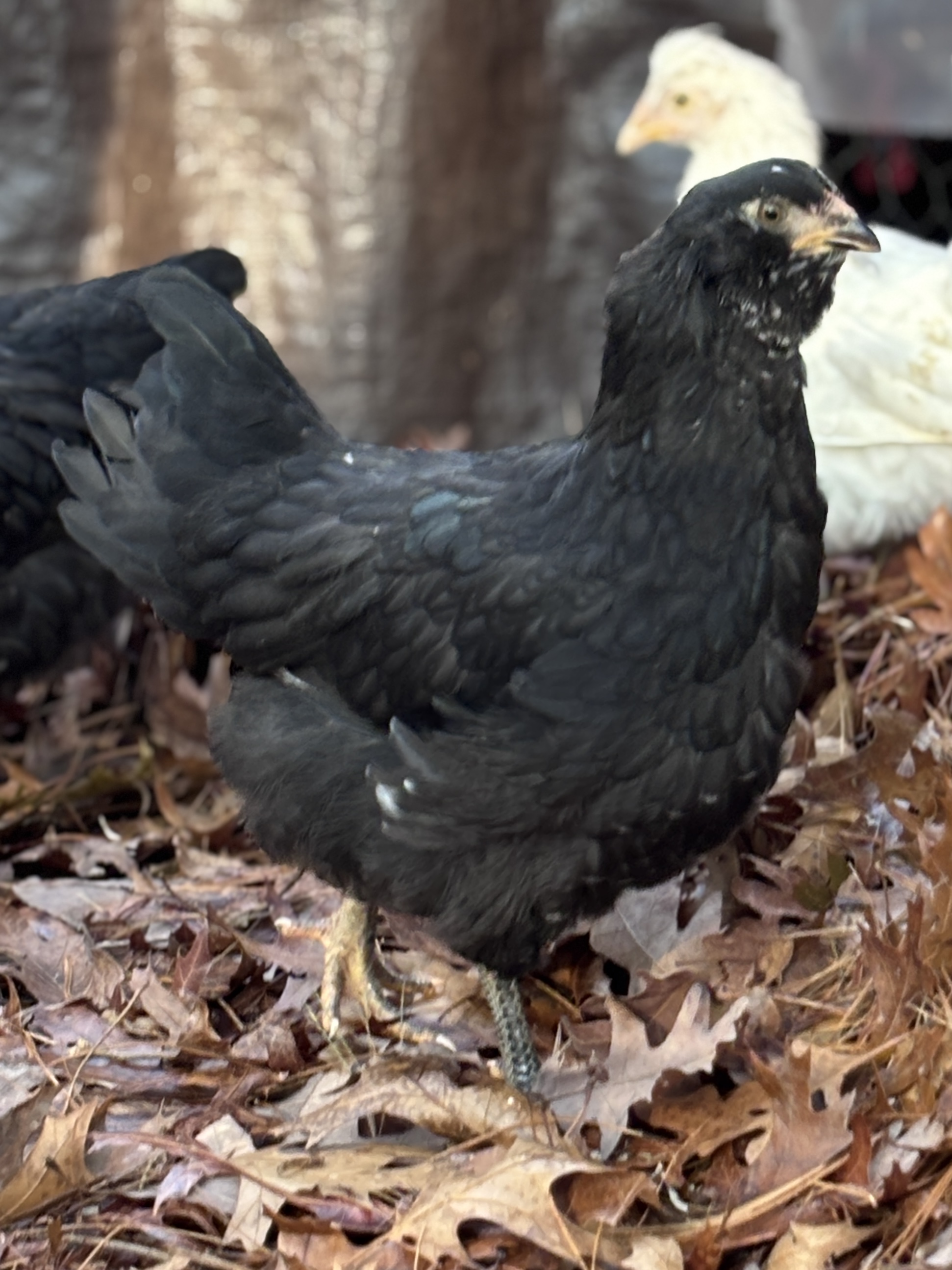
The Pitacana inherits traits from both parent breeds, creating a hybrid with unique and desirable qualities.
Physical Characteristics:
Plumage: Black is the dominant color in first-generation (F1) Pitacanas, often accompanied by white spotting under the wings, inherited from the Pita Pinta lineage. Their black feathers may develop a glossy sheen, appearing green or purple in sunlight.
Legs and Feet: Black and yellow legs and feet, showcasing a striking combination of colors.
Beaks: Black and yellow beaks, adding to their bold and attractive appearance.
Muffs and Beard: Inherited from the Ameraucana, the Pitacanas have the signature fluffy muffs and beard around their cheeks, giving them an adorable, full-faced look.
Egg-Laying Potential
Egg Color: While individual results may vary, most Pitacanas are expected to lay blue, green, or olive eggs due to the Ameraucana parent’s blue egg gene. The Pita Pinta's cream egg genetics may influence the egg color to produce unique shades.Frequency: These hybrids are expected to be consistent layers, producing medium to large eggs.
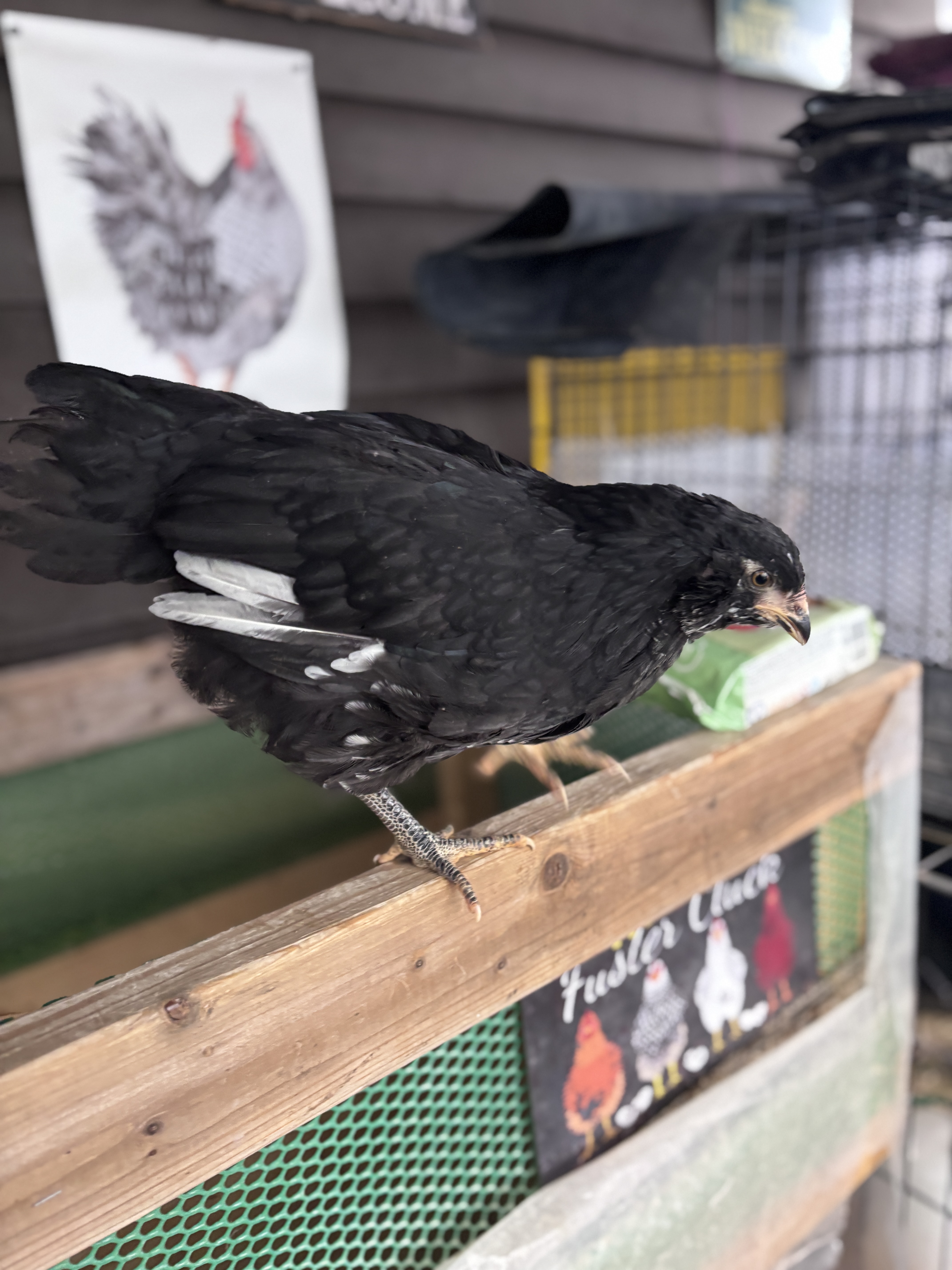

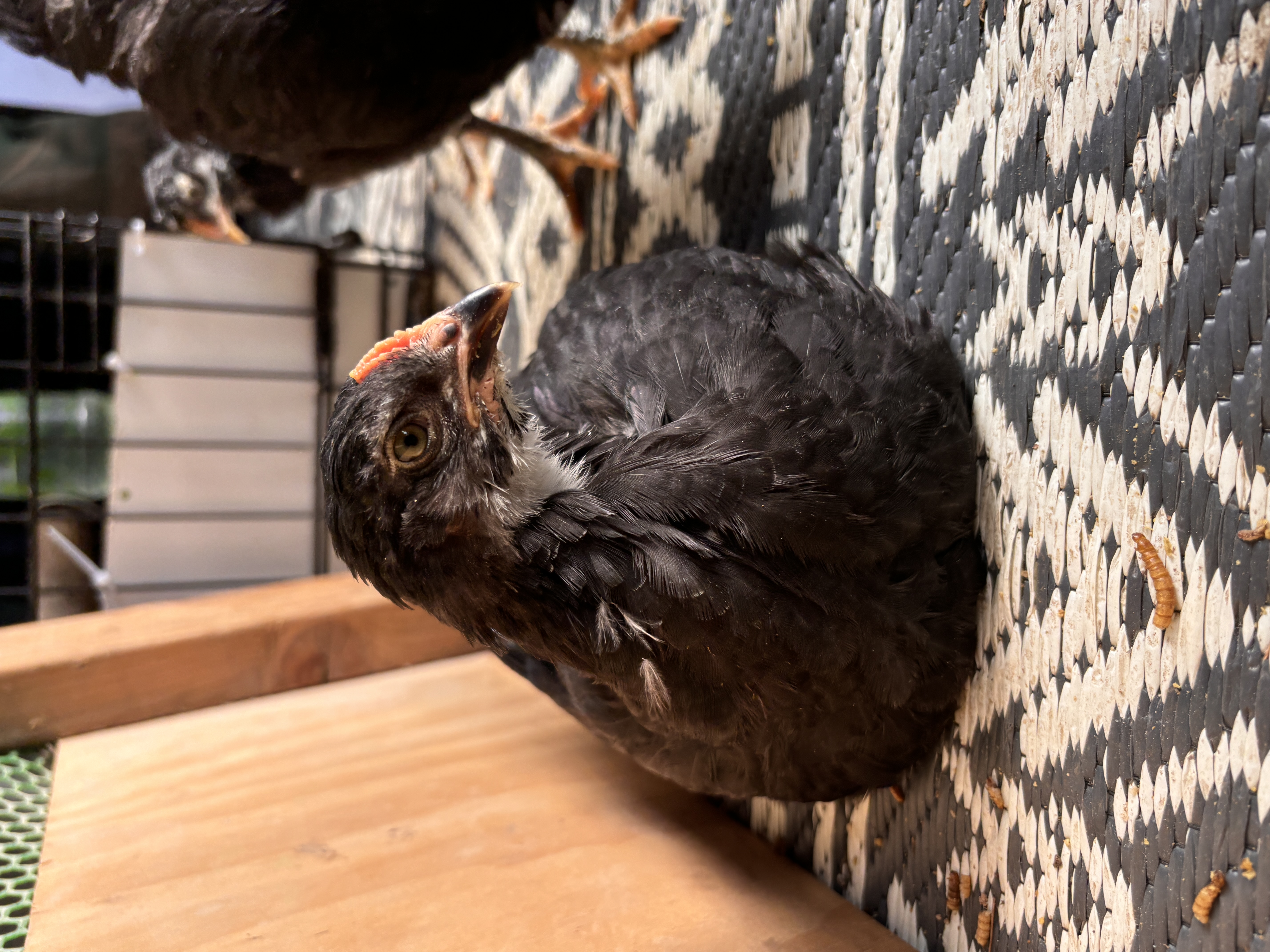
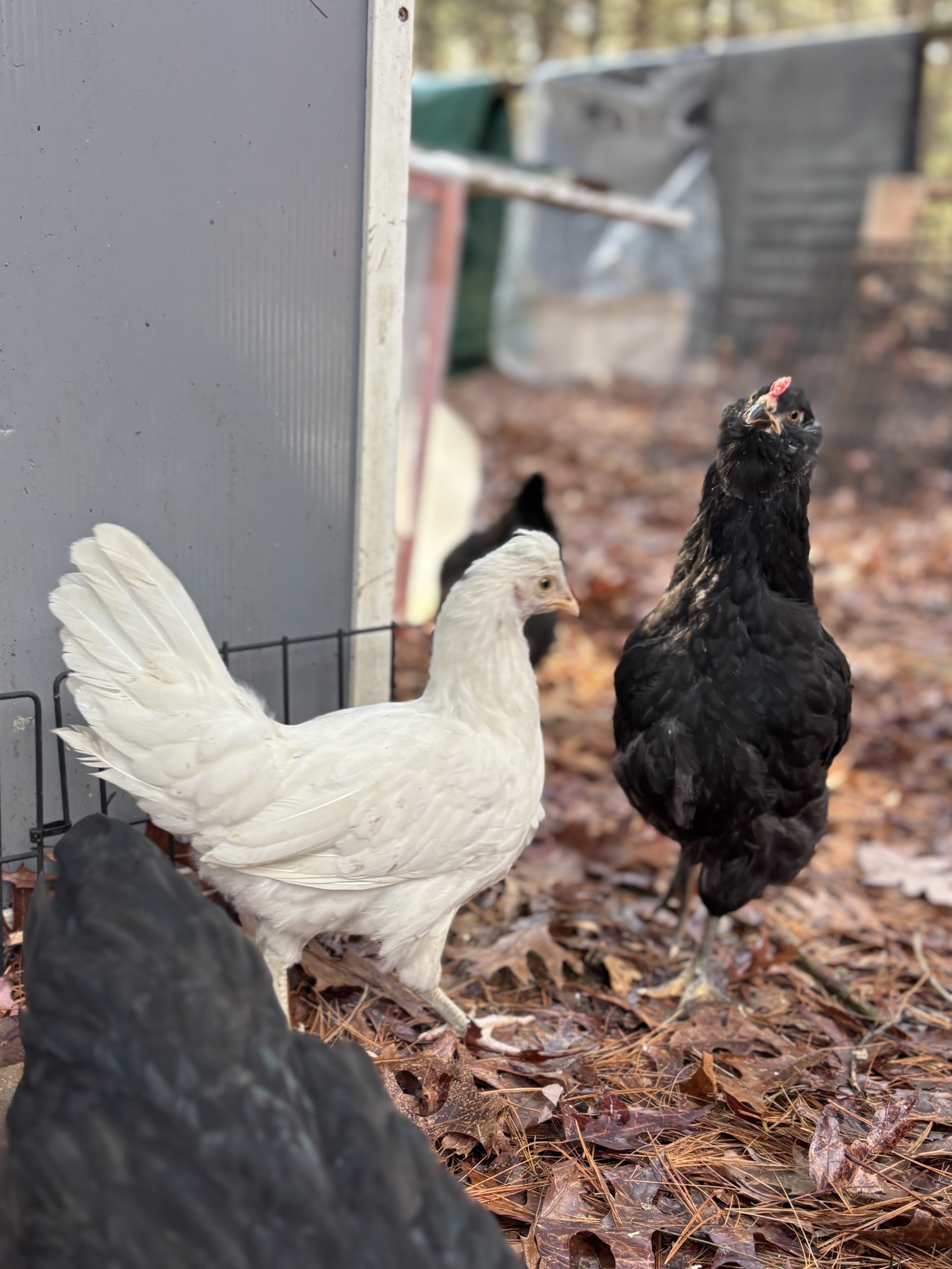
Size and Build
Medium-sized birds, combining the Pita Pinta’s sturdy build with the Ameraucana’s sleek body. Hardy and adaptable, suited for backyard flocks in various climates.
Temperament
Pitacanas are expected to inherit the best of both parent breeds’ temperaments:
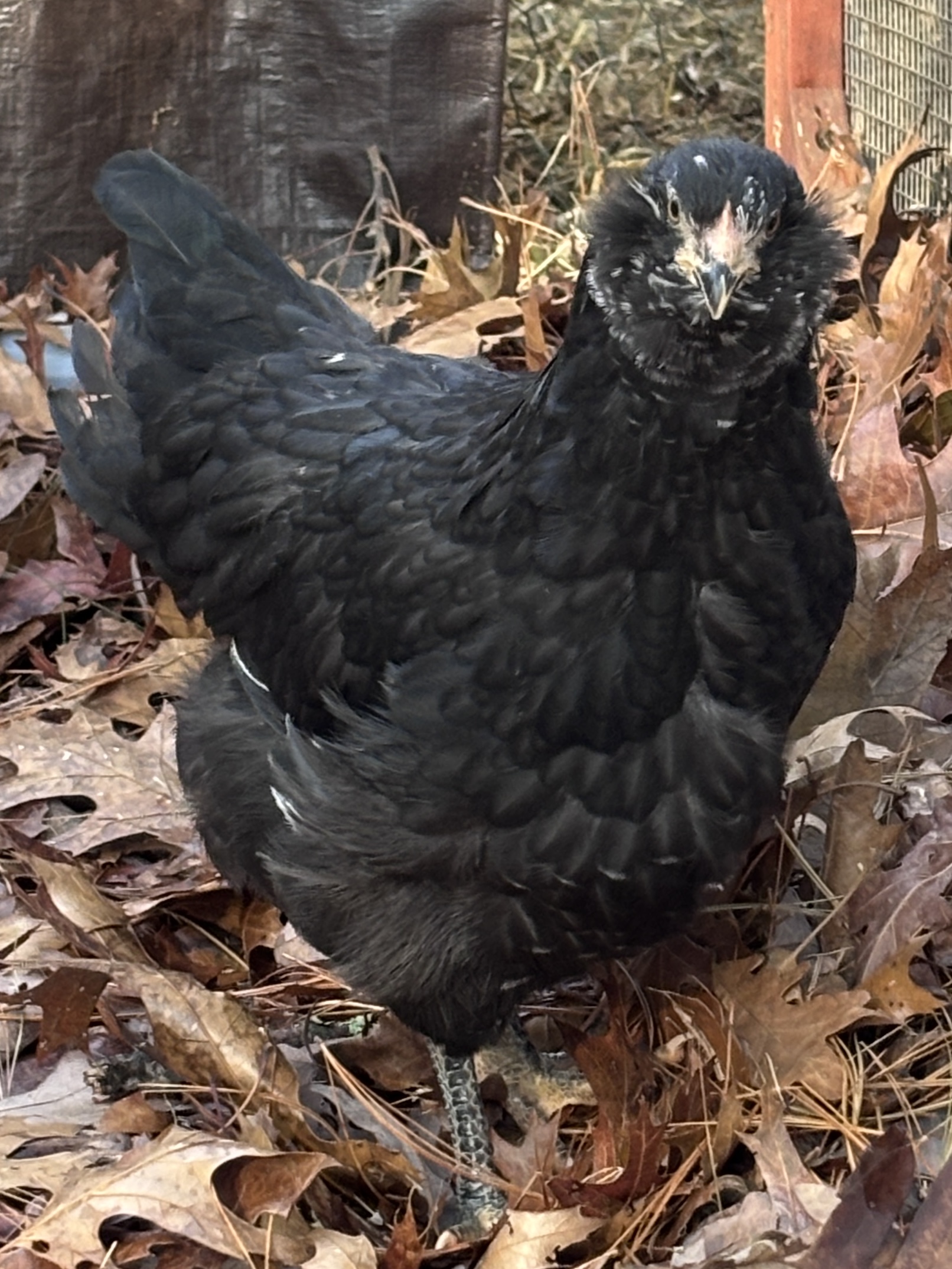
Friendly and Curious: Like Ameraucanas, they are likely to be social and inquisitive, making them great for families.
Hardy and Calm: From the Pita Pinta, they inherit a robust constitution and even temperament.
Why Choose a Pitacana?
If you’re looking for a unique, eye-catching chicken with colorful egg potential and a charming personality, the Pitacana is an excellent choice.
Here’s why:
Unique Appearance: Their black plumage with white spotting, striking black-and-yellow legs, and signature Ameraucana cheeks make them visually stunning.
Colorful Eggs: Expect blue, green, or olive eggs for a fun and vibrant egg basket.
Hardiness: Thanks to the Pita Pinta’s heritage, Pitacanas are hardy birds that thrive in a variety of climates.
Friendly and Adaptable: Their calm, social nature makes them perfect for backyard flocks and families.
Dual Purpose Potential: While primarily kept for egg production, their medium build and good growth rate also make them suitable for meat production.
Climate Adaptability
Pitacanas are expected to thrive in both warm and cold climates, thanks to their hardy genetics. Their pea combs also make them less prone to frostbite in colder weather.
Why We Love Our Pitacanas
At our farm, we’re proud to offer these stunning hybrids to our customers. Their bold black-and-white appearance, vibrant eggs, and friendly personalities have made them a favorite in our flock. Whether you’re a first-time chicken owner or a seasoned poultry keeper, Pitacanas bring beauty, personality, and productivity to your backyard flock.
If you’re interested in adding Pitacanas to your flock, feel free to contact us! We’d be happy to share more about their unique traits and help you get started. 🐓💛
SmFAQall Call to Action Headline
What is a Pita Pinta?
The Pita Pinta Asturiana is a rare heritage chicken breed from Asturias, Spain. Known for its striking appearance and hardy nature, the Pita Pinta is Spain's only native breed with mottled plumage ("Pinta" means "spotted" in Spanish).
Key Characteristics:
Plumage: Most commonly black with white mottling, but other varieties include white or chestnut.
Eggs: Lays medium-sized cream-colored eggs.
Temperament: Calm, hardy, and adaptable, making it an excellent choice for backyard flocks.
Purpose: Dual-purpose breed, suitable for both eggs and meat.
The Pita Pinta is known for its resilience in various climates, making it an easy-to-care-for bird with striking beauty and practical uses. This breed is still rare outside its native region, adding a unique touch to any flock!
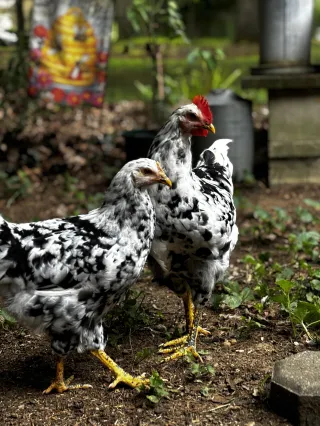
Is the Pitacana an Easter Egger?
Yes, the Pitacana is technically an Easter Egger, as it is a hybrid chicken with the potential to lay colorful eggs, thanks to its Ameraucana parent. Easter Eggers are not a specific breed but a mix of chickens that inherit the blue egg-laying gene from one parent (in this case, the Ameraucana). However, we’ve given this hybrid a special name, "Pitacana," to highlight the unique combination of traits from the Pita Pinta Asturiana and Ameraucana breeds.
Will all Pitacanas look the same?
Not necessarily. While black plumage with white under-wing spots is dominant in the first generation, some variations are expected.
What color eggs will Pitacanas lay?
Most Pitacanas will lay blue, green, or olive eggs due to the Ameraucana parent’s genetics. Occasionally, some may lay light brown eggs if the Pita Pinta’s genetics dominate.
Are Pitacanas good egg layers?
Yes, Pitacanas are excellent egg layers! You can expect them to lay around 200–250 medium to large eggs per year, depending on diet, environment, and care. Their productivity makes them a great choice for backyard flocks or small farms.
Are Pitacanas good for beginners?
Yes! Pitacanas are hardy, friendly, and low-maintenance, making them a great choice for new chicken keepers.
Do Pitacanas get along with other chickens?
Yes, Pitacanas are generally friendly and integrate well into mixed flocks. However, as with all chickens, you should introduce them gradually to prevent pecking order disputes. Their calm temperament makes them less aggressive than some other breeds.
How big do Pitacanas grow?
Pitacanas are medium-sized birds: Hens generally weigh around 5–6 pounds. Roosters are slightly larger, weighing around 6–7 pounds. This size makes them manageable for backyard flocks and families.
How long do Pitacanas live?
With proper care, Pitacanas can live 5–8 years, though their productivity as layers will decline after the first few years. Good nutrition, regular health checks, and a clean, safe environment will help maximize their lifespan.